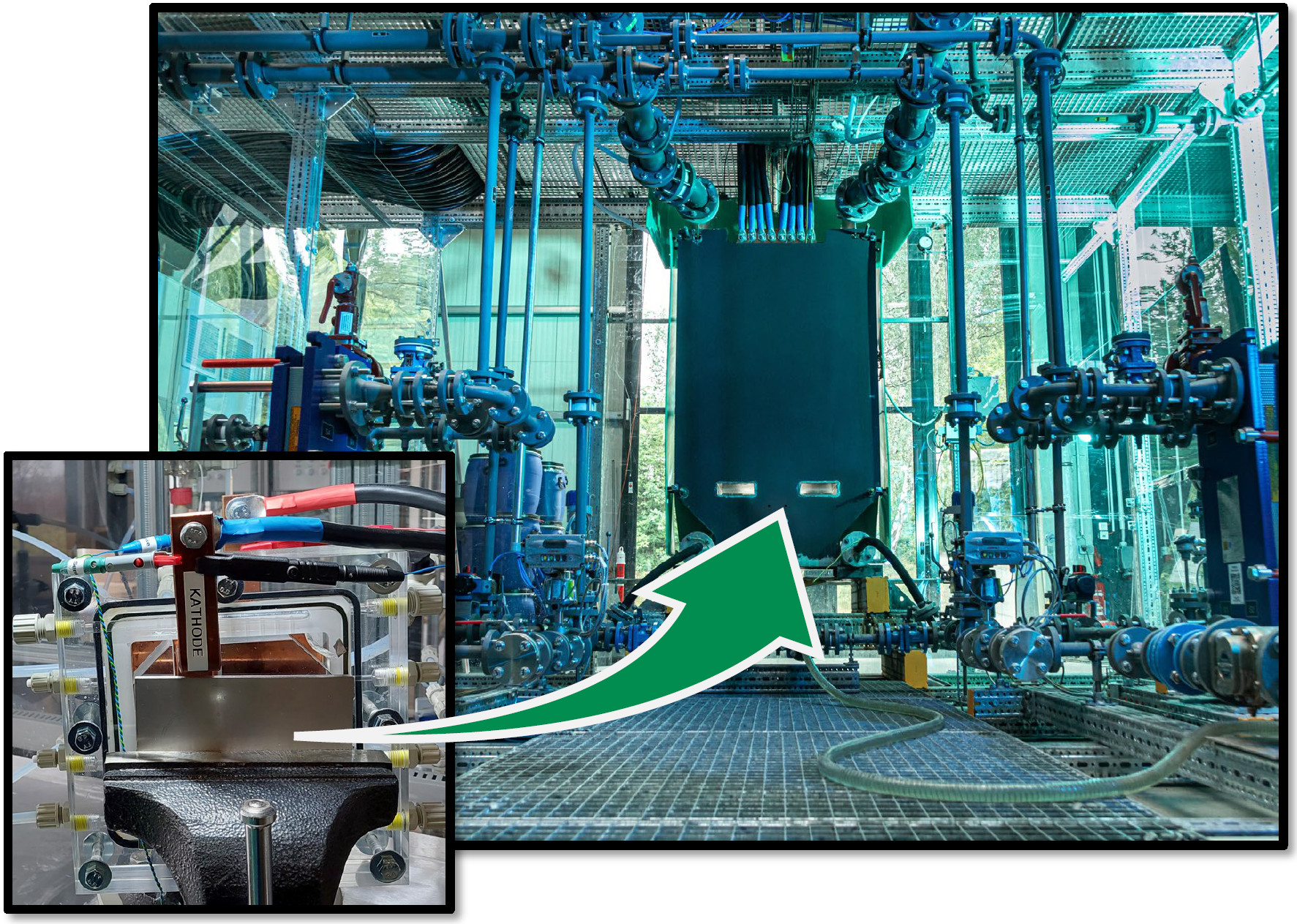Characterization of gas void fraction effects for upscaling alkaline water electrolysis
Hydrogen (H2) is an important primary material for the chemical industry and is also set for storing and transporting renewable energies in the future. Alkaline water electrolysis uses highly concentrated potassium hydroxide solution as an electrolyte and is a promising process for the industrial, resource-saving production of H2. In order to reach industrial scales as quickly as possible, it is important to promote the understanding of upscaling so that laboratory results can be better applied to technically relevant variables.
As part of this work, experiments will be carried out on an existing laboratory system (100 cm² cell area) with different gas void fractions and characterized using electrochemical measurement methods. The different gas void fractions simulate the height of an industry-relevant cell, with which the results obtained are then to be compared and deviations worked out. A short stack from the start-up WEW or a pilot plant cell currently under development could be used for validation. With the opportunity to contribute your own ideas, the work objective can be formulated in the elaboration of the core variables in gas void fraction upscaling.

Information about the thesis
Type of thesis: Master's thesis (Bachelor's thesis)
Start of work: April 2024, by arrangement
Method: Experimental
Place of work: EST, Goslar
Contact person: Felix Gäde
Information about the thesis as PDF